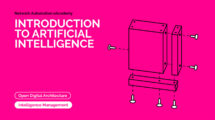Words: Jakob Feldtfos Christensen and Lachlan Smith, DIVERSIunity
The promises of strong research infrastructures are widely recognised, including how it can help developing nations gain equality in research and enable minority groups to connect and find a voice. While that is true and indeed wonderful, the potential of research infrastructure never exceeds the people realising that potential and the ecosystem within which it sits.
Research never happens in a vacuum. Institutions are part of national cultures, and researchers are human with biases and stereotypes. Any promises and possibilities depend on human beings – and the moment you bring them into the equation, things can get messy. But we shouldn’t give up; we simply need an honest narrative.
However, the abstract nature of digital research infrastructures makes it easy to buy into the naïve idea of a shared global research culture. But the moment we buy into that, we forget that LGBTQ+ people, like us, and other minority groups cannot necessarily travel all over the globe without a significant element of personal risk.
And that is a promise of digital infrastructures: that we can collaborate without going to places where we may face that risk. Minority communities can find other community members worldwide and create research collaborations. But, as social media has shown us, this is a double-edged sword as the platforms building communities are also the platforms of hate speech, shaming and persecution. What was meant to connect us – isolated us. We don’t want that to be the consequence of digital research infrastructure.
And we all know that decisions are often made by those in the room, those who get to connect and network face-to-face, and those who are at the dinners and get a drink in the bar afterwards. Digitalisation risks creating an illusion of possibilities and equality on the surface, but ultimately, it becomes a tool to maintain the status quo.
And so, digital research infrastructures must be seen in a complex frame of power dynamics, incentives, values, and culture. New digital infrastructures can switch up the power dynamics at the core of the research ecosystem. And while most of us consider that a good thing, some might feel threatened and inclined to maintain the status quo.
Building the infrastructure and leaving it to everybody else to fulfil the potential is like the researcher publishing an article and insisting that it has led to real-life changes. We talk about paths to impact and impact partners. We may need to do the same regarding the providers of research infrastructure. What is your responsibility? Who will help you? How will you make it work for everybody –not just for those already in power?
Not that you can do it alone. You are part of the research ecosystem, so we must solve it together. Research is more than bits, bytes, data and cables. People do research for the benefit of society. So, let’s talk about power dynamics, incentives, values, and cultures for people worldwide in all our diversity.


Read or download the full magazine here







